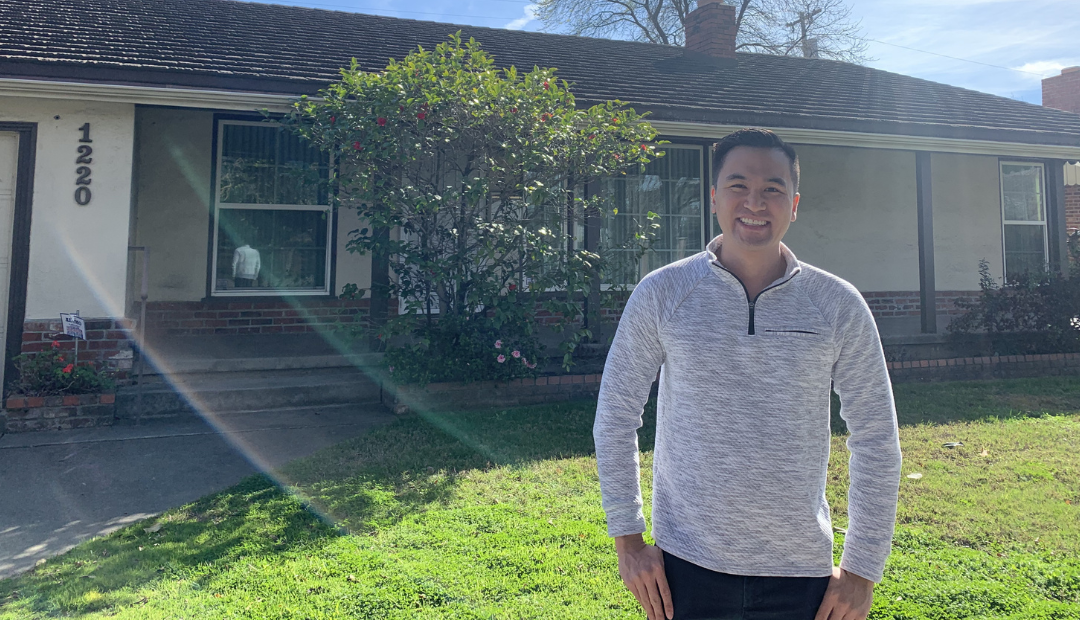Are you a pharmacist looking to build long-term wealth, earn passive income, or retire early—without giving up your career?
You’re not alone. Many pharmacists are turning to real estate investing to create financial freedom beyond their careers.
I was one of them.
As a former pharmacist who built a 7-figure real estate portfolio while still working full-time, I’ll show you exactly how to get started, avoid common mistakes, and grow your wealth step by step—even if you’re brand new to real estate.
Let’s dive in.
Key takeaways
- You don’t need to quit your pharmacy job to start investing in real estate. With the right strategy, like house hacking and student rentals, you can build passive income and long-term wealth while still working full-time.
- Rental properties are the best starting point for pharmacists: They offer reliable cash flow, long-term wealth, and major tax advantages without requiring you to quit your practice.
- A 7-figure portfolio is possible even if you start from scratch. I built mine by setting clear income goals, reinvesting profits, and using systems to manage properties without sacrificing my career or sanity.
Ready to learn how? Here’s what we’ll cover:
Table of contents: Real estate for pharmacists
- How i retired from pharmacy through real estate
- Best real estate investing strategies for pharmacists
- How to start investing in real estate as a pharmacist
1. Define your financial goals
2. Learn real estate investing (without expensive mistakes)
3. Build your real estate investing team
4. Find the right first rental property
5. Finance your investment property
6. Close the deal like a pro
7. Manage the property efficiently (even if you’re busy) - How to overcome common challenges pharmacists face
- Frequently asked questions (FAQ)
Let’s start by understanding why real estate is such a smart investment strategy for you as a pharmacist.
How I started in real estate as a pharmacist (and retired at 31)
Back in my early twenties, I was a recent pharmacy school graduate working a typical 9-to-5. But deep down, I knew I didn’t want to spend the next 40 years behind a counter.
That’s when I discovered real estate investing.
Inspired by my grandfather who had successfully invested in rental properties, I saved aggressively, worked overtime, and scraped together a down payment to buy my first rental property.
It wasn’t easy—I made mistakes, and it took time. But that first investment started generating income, and I reinvested the profits to build a portfolio.
By age 31, I had replaced my pharmacy income and retired from my day job.

I have far more time to do the thing I love, like traveling and spending time with family
Today, my rental portfolio is worth 7 figures. And if you’re a pharmacist wondering if real estate is worth it, here’s what I’ve learned:
- Profitability: Real estate is tied to a basic human need—housing—which makes it a reliable way to build wealth.
- Diversification: Each new property added another income stream, which helped me protect and grow my finances.
- Passive income: Once a property is rented out, it brings in monthly income—even when you’re not working.
If you’re looking for financial freedom beyond the pharmacy, real estate is one of the best paths I know.
For more, I share my thoughts here:
Next, I’ll walk you through the exact strategies I used to start investing—so you can take your first steps with confidence.
The most profitable real estate investing strategies for pharmacists
Real estate investing doesn’t have to be complicated—especially if you’re a busy pharmacist with limited time.
Whether you want to create passive income, build long-term wealth, or eventually replace your pharmacy salary, here are the real estate strategies I’ve personally used (and recommend) to grow a real estate portfolio.
Rental properties (my #1 strategy)
Rental properties are one of the most reliable ways for pharmacists to build wealth. You buy a property, rent it out, and collect monthly income from tenants.
Here are the main types of rental properties to consider:
- Single-family homes: Easy to manage and great for first-time investors (no wonder it’s the most popular housing type for investors)
- Multi-family properties: More tenants = higher cash flow potential
- Short-term rentals (like Airbnb): Can generate more income per night but require more active involvement
Pros:
- Consistent monthly cash flow
- Long-term property appreciation
- Tax benefits (e.g., deductions for mortgage interest, depreciation, and expenses)
Cons:
- Potential vacancies
- Tenant issues
- Maintenance and repair costs
💡 Pro tip: I personally rent to students by the room. This increases my income per property and lowers risk. With the right systems in place, like thorough tenant screening and local property managers, I spend very little time on day-to-day issues.
House flipping
House flipping involves buying undervalued properties, fixing them up, and reselling them at a profit. If you’re willing to be more hands-on (or partner with contractors), this strategy can generate faster returns.
Two common approaches to flipping:
- Light flips: Cosmetic updates (paint, flooring, fixtures) — quicker but often pricier to buy
- Heavy flips: Major renovations (roof, plumbing, layout changes) — riskier but more profitable if done well
Pros:
- Potential for quick profits
- Flexible timeline—you’re not managing tenants long-term
Cons:
- Higher risk if the market shifts
- Requires upfront capital and renovation expertise
- More active involvement compared to rentals or REITs
REITs
If you want to invest in real estate without actually owning property, REITs are a great passive option.
A REIT is a company that owns or finances income-producing real estate. You can invest in REITs by buying shares (like stocks), and receive dividends from the income those properties generate.
Types of REITs to consider:
- Equity REITs: Invest in properties that generate rental income
- Mortgage REITs: Invest in mortgage loans or mortgage-backed securities
- Hybrid REITs: Combine both strategies
Pros:
- Passive income
- Liquidity—you can buy or sell REITs like stocks
- Diversified across multiple properties or sectors
Cons:
- Market volatility can impact performance
- Fees may reduce returns
- No direct control over investment decisions
Syndication
A real estate syndication allows you to invest in large commercial or residential deals by pooling funds with other investors. It’s a great way to access high-value properties without buying them yourself.
An experienced sponsor (or team) handles all the acquisition, management, and operations—you just invest your capital and receive returns.
Types of syndications:
- Equity syndication: You become a partial owner and receive a share of profits
- Debt syndication: You lend money and earn interest, without ownership
Pros:
- Truly passive investment
- Access to large-scale deals you couldn’t afford on your own
- Professional property management
Cons:
- Your money is locked in for several years (illiquid)
- Limited decision-making power
- Requires due diligence to vet the sponsor
Which strategy is best for you?
If you’re just getting started, I recommend beginning with rental properties.
Watch my breakdown of these strategies (and my beginner tips):
Next, I’ll break down how to actually get started—step by step.
How to invest in real estate as a pharmacist
If you’re a pharmacist, you already have a demanding career, which can make getting started in real estate feel overwhelming.
But the truth is, you don’t need to figure it all out at once.
Here are the exact steps I followed to build a 7-figure real estate portfolio—while still working full-time in pharmacy:
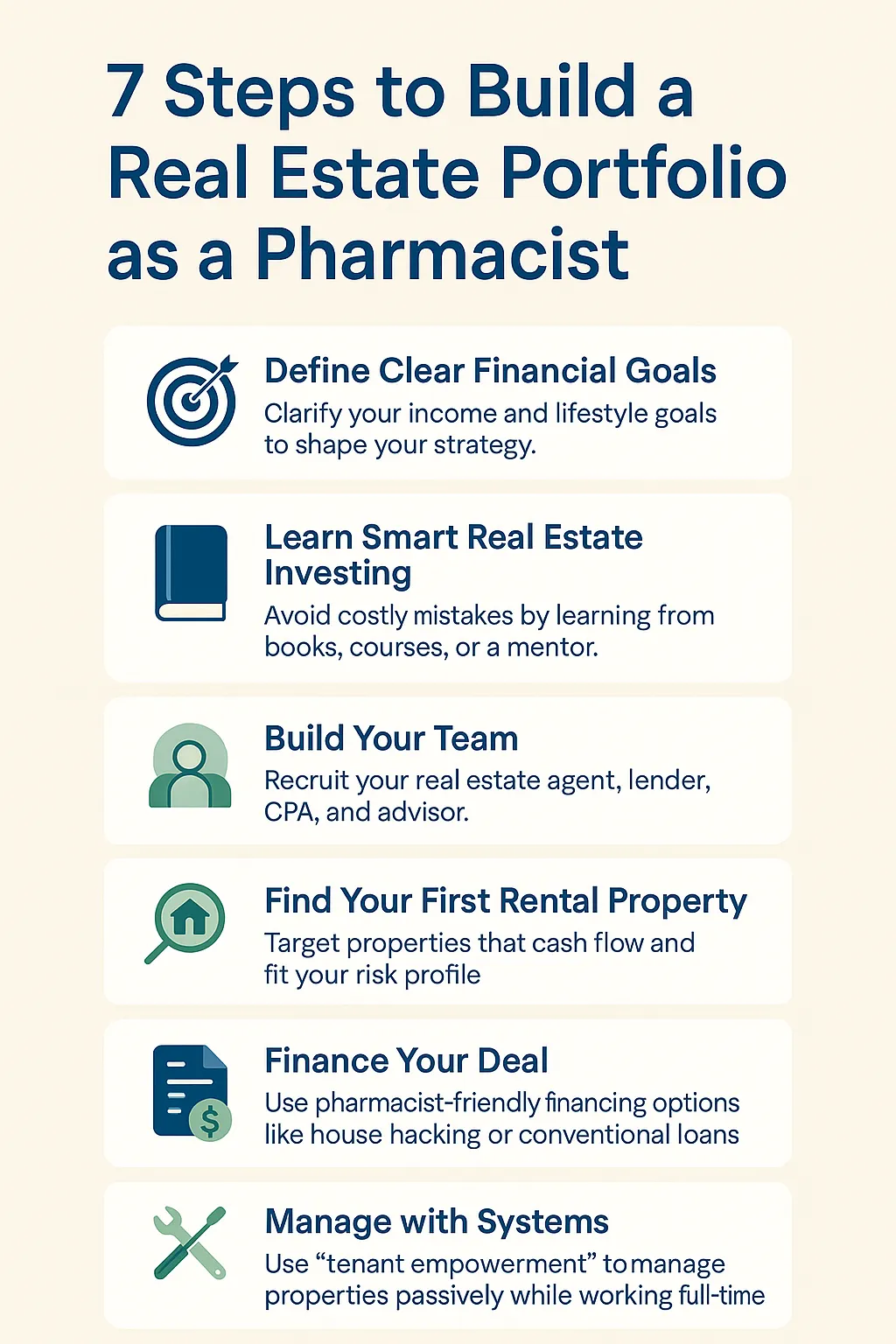
1. Define your financial goals
Before you buy your first property, get clear on why you’re investing in real estate. Your goals will shape everything—from the types of properties you choose to how you structure your deals.
Ask yourself:
- Do I want to generate monthly cash flow to supplement my income?
- Am I looking for long-term wealth and property appreciation?
- Do I want passive income that eventually replaces my day job?
- Am I focused on tax advantages to reduce my yearly tax bill?
Here’s what each of those goals means in practice:
- Cash flow: This is the income left over after you subtract all expenses from your rental property (mortgage, insurance, maintenance, etc.). It’s what you put in your pocket every month.
- Tax savings: Real estate offers generous tax benefits, including deductions for mortgage interest, repairs, depreciation, and even travel in some cases.
- Passive income: With the right systems in place (like property management), you can earn income without trading your time for money.
- Equity growth: Over time, your properties increase in value and your tenants pay down your mortgage, building your net worth without active effort.
Why this step matters: When you know your goals upfront, you can reverse-engineer your strategy.
For example, if your main goal is cash flow, you’ll want to focus on high-rent, low-expense markets.
Take my example: I had one clear goal—replace my full-time income as fast as possible so I could quit my job.
To make that happen, I built a focused plan around that income target:
- I took on extra hospital shifts to save aggressively for my first property
- I reinvested every dollar of cash flow into buying more rentals
- I prioritized speed—scaling quickly instead of slowly building over 30 years
That approach allowed me to grow a cash-flowing portfolio while still working full time.
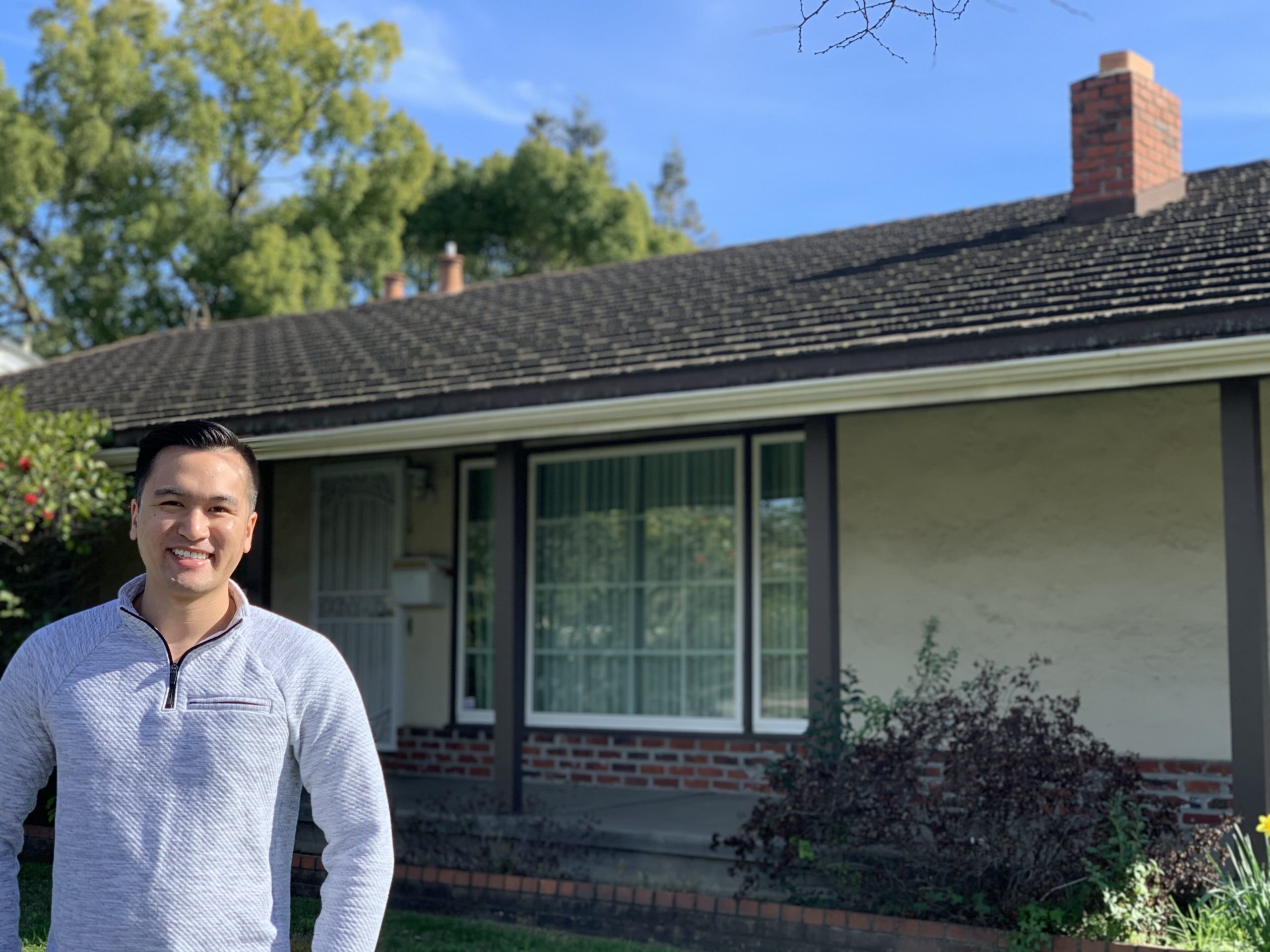
One of my own properties!
2. Learn real estate investing
If you’re a pharmacist new to real estate investing, figuring it out on your own might seem doable—but it can get expensive fast.
I know from experience. My first rental property left me with a $30,000 repair bill I wasn’t prepared for.
The good news? You don’t have to go it alone.
There are countless ways to learn real estate investing today—no matter your budget or schedule:
- Books: Great for foundational knowledge (e.g., Rich Dad Poor Dad, The Millionaire Real Estate Investor)
- Podcasts: Perfect for learning on the go (e.g., BiggerPockets, Rental Rookie)
- Online courses: Structured, step-by-step learning at your own pace
- YouTube: Short tutorials to real estate investing
- Coaching and mentorship: Personalized advice from someone who’s already done what you want to do
💡 If you’re serious about building a profitable real estate portfolio as a pharmacist, I highly recommend working with a coach or mentor who has done what you want to do.
That one decision can help you:
- Avoid costly beginner mistakes
- Learn the best investment strategies for your specific goals
- Take action faster—with confidence
I offer one-on-one coaching tailored to pharmacists who want to invest in real estate. If you’re interested in learning more, just reach out—I’d be happy to share how I can help.
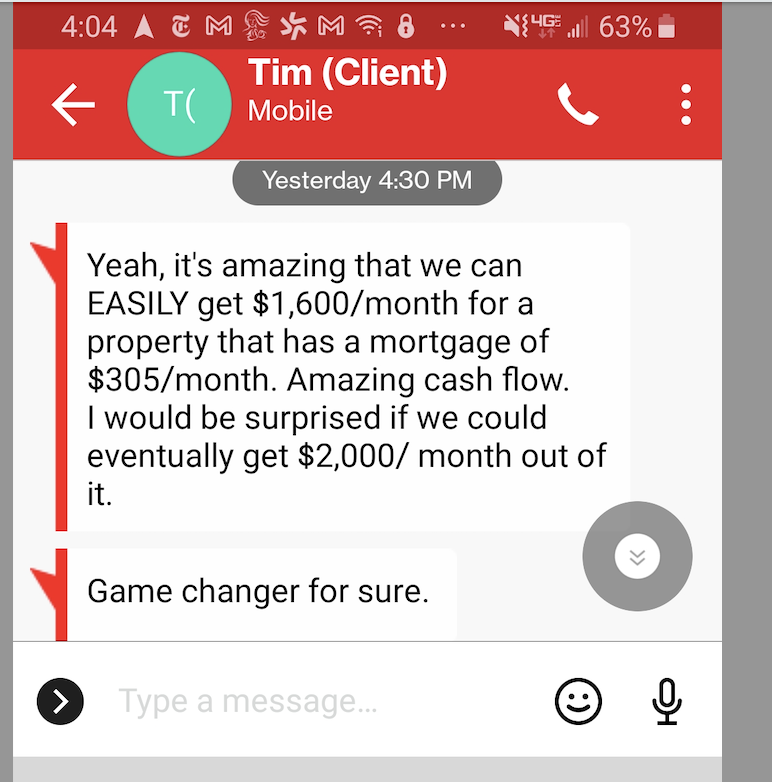
Take my client Tim, a healthcare professional. He bought a property for $62,000 with a $1,600 cash flow and built his business from there.
3. Build your real estate investing team (so you’re not doing it alone)
The next step is to build your team – because doing it alone is not only exhausting… It can also cost you time, money, and missed opportunities.
Here are the key players every pharmacist-investor should have on their side:
- Real estate broker or agent: A good broker helps you find and evaluate potential deals—especially ones that fit your cash flow goals and risk tolerance.
- Lender or mortgage broker: They help you understand your financing options and secure the best loan terms (which can make or break a deal).
- CPA (Certified Public Accountant): Your CPA is your go-to expert for tax strategy. They’ll help you structure your investments to legally reduce your tax bill and maximize deductions.
- Property manager (optional): They handle tenant communication and daily maintenance (but if you want to boost profits, you can manage the property yourself without turning it into a full-time job)
Now that you’ve set clear goals and built your investing team, it’s time to hunt for a rental that can actually hit your income targets.
Step 1: Know your financial starting point
Before you tour a single house, pull together three numbers lenders (and you) care about:
- Savings: Do you have enough for the down payment and at least 3–6 months of cash reserves?
- Credit score: A higher score unlocks lower interest rates and better loan terms.
- Debt-to-Income (DTI) Ratio: Lenders use DTI to gauge risk; aim for ≤ 45 percent.
These figures set the budget and financing strategy for your first deal.
Step 2: Understand what makes a rental profitable
When you analyze a property, focus on two core metrics:
| Metric | What It Tells You | How to Calculate |
| Cash flow | Monthly income that lands in your pocket after all expenses (mortgage, taxes, insurance, maintenance, vacancy) | Rent − Total Expenses |
| ROI (Return on investment) | Annual return as a percentage of your initial cash invested (down payment + closing costs + upfront repairs) | Annual Cash Flow ÷ Initial Cash × 100 |
If a property doesn’t meet your cash-flow target and minimum ROI, keep looking.
Step 3: Evaluate the right property for your first investment
Look for rentals that check these boxes:
- Good location: Low crime, job growth, solid school ratings, and strong rental demand (health-care hubs often excel here).
- Solid condition: Minimal repairs, so you can start collecting rent quickly.
- Fair market price: Priced at, or preferably below, market value so your numbers still work if rents dip.
👉 Need a walkthrough of what to look for? Watch this quick video:
5. Finance your rental property
Unless you’ve already got a large amount of cash set aside, chances are you’ll need financing to purchase your first investment property.
The good news?
As a pharmacist, your stable income and strong credit profile can help secure financing options that make it easier, and faster, to start building wealth through real estate.
Traditional financing: Conventional mortgage
Most first-time investors begin with a conventional loan, which is one of the most straightforward ways to finance a rental.
Here’s what you’ll typically need:
- 15%–20% down payment (for investment properties)
- Strong credit score (the higher, the better)
- Low debt-to-income (DTI) ratio to qualify for better terms
This is a great fit if you’re buying a single-family home or a small multi-family property that’s already in livable condition.
Alternative financing options
If you’re short on capital, want to move faster, or don’t qualify for a traditional loan, these alternatives can help:
- Private money: Borrow from friends, family, or investors in exchange for interest or a share of profits.
- Hard money loans: Short-term loans based on the property’s value. Great for flips, but expect higher interest rates.
- Government-backed loans: FHA or VA loans may allow you to buy with as little as 3.5% down if you plan to live in the property.
- Home equity loans/HELOCs: Tap into the equity of your primary residence to fund a down payment.
- DSCR loans (Debt Service Coverage Ratio): These loans are based on the property’s income, not your personal income, which can be ideal for scaling quickly.
The best starter strategy: House hacking
One of the fastest, most affordable ways to break into real estate? House hacking.
Here’s how it works:
- Buy a single-family home (or small multi-family)
- Live in one room or unit
- Rent out the others
- Use the rental income to cover your mortgage—so you live for free (or nearly free)
Because you’re living in the property, you can often qualify for owner-occupied loans with just 3%–5% down, which is significantly lower than traditional investment loans.
I personally used this exact strategy and now I live rent-free in California thanks to house hacking.
Want to see how it works? Watch my house hacking breakdown here:
Bottom line: Whether you go the traditional mortgage route or take advantage of house hacking or creative financing, there are more paths to funding your first deal than you might think even if you’re just starting out.
6. Close on the property
You’ve found the right property and secured financing. Now it’s time to close the deal!
But before you sign the dotted line, take these crucial steps to protect your investment and ensure long-term profitability.
1. Get a professional home inspection
A thorough inspection is non-negotiable. It can reveal hidden issues like:
- Foundation cracks
- Plumbing or electrical problems
- Roof damage
- Mold or water intrusion
If the inspection uncovers problems, you’ll be in a strong position to negotiate, whether that’s lowering the purchase price or asking the seller to make repairs before closing.
2. Review all financial and legal details
Beyond the physical condition of the property, take time to verify:
- Rental income potential (based on comps in the area)
- Operating expenses (property taxes, insurance, maintenance, etc.)
- Zoning regulations (to ensure it’s legally rentable or suitable for your plans)
- HOA rules or restrictions (if applicable)
💡 Pro tip: Ask for the seller’s rent roll and expense history if it’s an existing rental property. This will help you confirm whether the deal actually aligns with your cash flow and ROI targets.
Why due diligence before closing matters
Doing your homework before closing can:
- Prevent unexpected repair costs
- Help you start cash flowing faster
- Reduce legal or regulatory headaches
- Strengthen your long-term returns
Next up: I’ll show you exactly what to do after closing so you can hit the ground running and start generating passive income right away.

7. Manage the property
Once you close on your rental, the real work begins: property management.
The big question most new investors face is:
Should I hire a property management company or self-manage?
My take? Self-managing can save you thousands each year and it’s much simpler than most people think.
I use a system I call tenant empowerment to simplify management and reduce time spent on day-to-day issues.
Here’s how it works:
- When something minor goes wrong (like Wi-Fi issues), tenants handle it directly.
- Instead of calling me, they call the internet provider or plumber themselves.
- I provide them with a list of contacts and instructions when they move in.
Why this works:
- Issues get resolved faster
- I don’t have to micromanage
- Tenants feel more in control and responsible
This approach has saved me hours of time, and it works whether you’re managing students, professionals, or families.
For a full breakdown of the system, take a look here:
Bottom line:
If you want to save money and still keep your rental running smoothly, consider managing it yourself using a smart system like tenant empowerment. You don’t need to be on-call 24/7—you just need a process.
How to overcome common challenges pharmacists face in real estate investing
Even as a healthcare professional with a steady income, getting started in real estate can feel overwhelming.
But here’s the truth: every challenge has a solution, and once you have the right strategy, you can start building wealth without burning out.
These are the most common hurdles I see pharmacists face—and how to move past them:
1. Not enough time to manage a property
With a demanding work schedule, the idea of becoming a landlord can feel unrealistic. But real estate doesn’t have to take over your life.
Solution:
- Time block 1–2 hours per week for real estate-related tasks
- Use tools to automate rent collection, lease renewals, and maintenance requests
- Empower your tenants to handle basic issues themselves
2. Feeling unprepared or afraid to take the first step
It’s normal to feel unsure. But you don’t need to be an expert to start investing smartly.
Solution:
- Focus on learning the fundamentals: cash flow, ROI, and risk mitigation
- Study real-world examples (not just theory)
- Learn from someone who understands what it’s like to start as a busy healthcare professional
3. Concerns about taking on more debt
Between pharmacy school loans and life expenses, adding more debt might seem risky. But when used wisely, leverage can accelerate your path to financial independence.
Solution:
- Review your credit score, savings, and debt-to-income ratio to set a safe baseline
- Only invest in properties that produce positive cash flow each month
- Keep 3–6 months of reserves for peace of mind and emergency flexibility
4. Trying to figure it out alone
Navigating real estate without support can slow you down or lead to avoidable mistakes. A solid network of experts makes everything easier and less stressful.
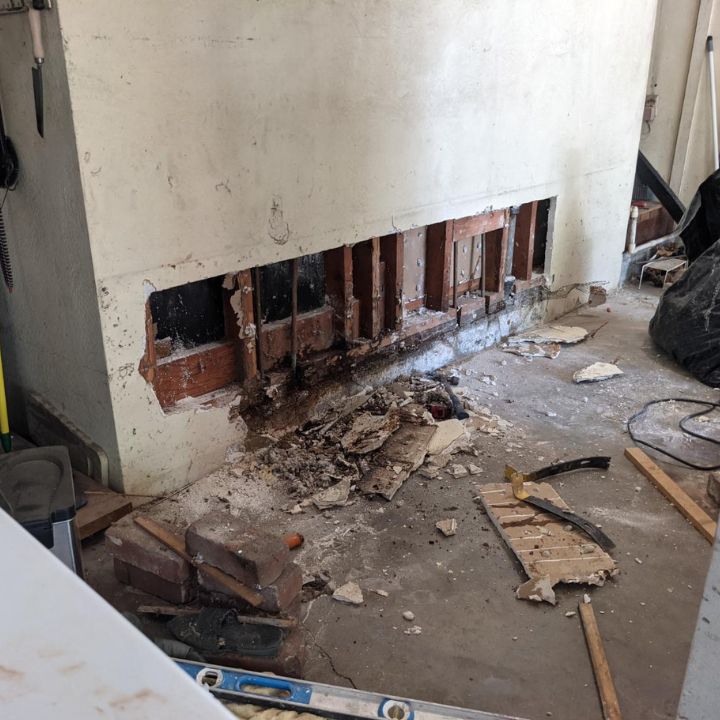
As a first-time investor, I made some costly mistakes, mainly because I didn’t have the right support. My first property ended up needing major repairs, which set me back years. You don’t have to go through the same thing. With the right guidance from day one, you can avoid expensive setbacks and start building wealth much faster.
Solution:
- Find a real estate coach or mentor who has experience working with pharmacists
- Build your team: real estate agent, CPA, lender, and insurance advisor
- Get advice tailored to your goals, lifestyle, and risk comfort zone
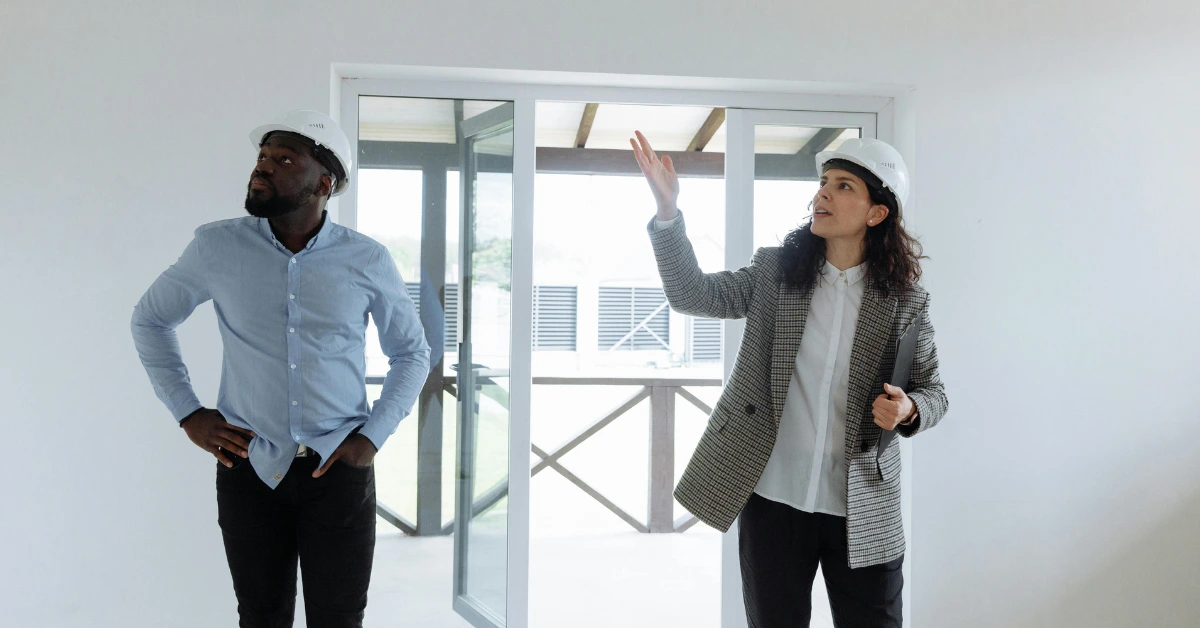
FAQs about real estate for pharmacists
Is real estate a good investment for pharmacists?
Yes, real estate is one of the most effective ways for pharmacists to build long-term wealth, earn passive income, and reduce taxes. As a high-income professional, you can use your stable income and credit profile to access strong financing options and scale your portfolio faster than most.
How can I invest in real estate while working full-time as a pharmacist?
You don’t need to quit your job to start investing. Many pharmacist-investors (myself included) build their portfolios while working full-time by starting with low-maintenance rentals or house hacks and automating tasks like rent collection and maintenance tracking.
Do I need to manage the property myself?
Not necessarily. While self-managing can save you money (and is simpler than you might think), you can also hire a property management company. I personally use a method called tenant empowerment, which allows my tenants to handle minor issues on their own—with clear instructions and contacts provided upfront.
Ready to build your own real estate portfolio?
And there you have it! Everything you need to know about real estate for pharmacists.
You’ve seen how real estate can transform your income, lifestyle, and long-term security, even if you’re working full-time as a pharmacist.
I know because I’ve done it myself—starting with no experience and building a 7-figure portfolio that allowed me to leave my day job behind.
Now it’s your turn.
If you’re serious about creating passive income, scaling your wealth, and gaining the freedom pharmacy school never taught you about—I’d love to help you get there faster (and with fewer mistakes).

